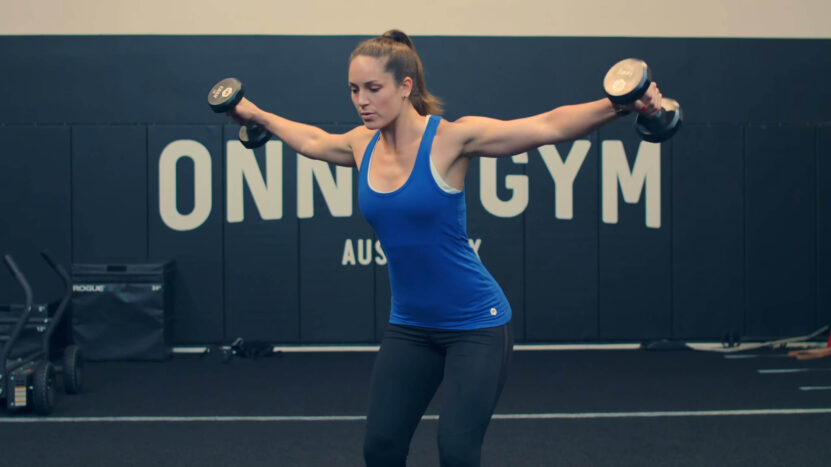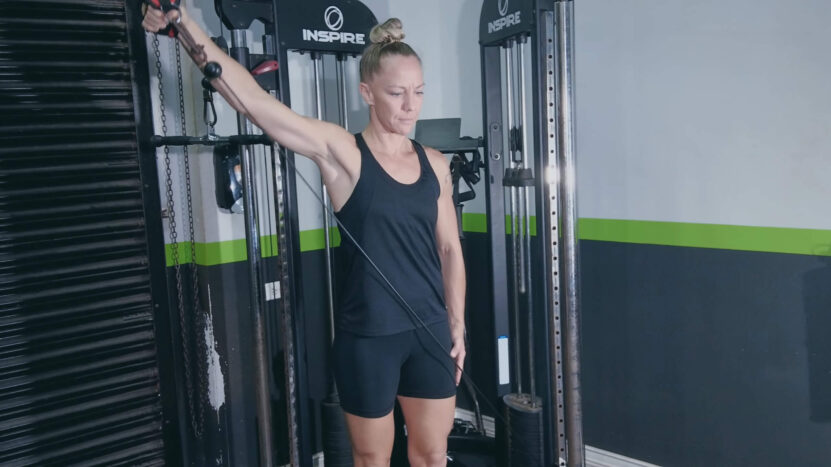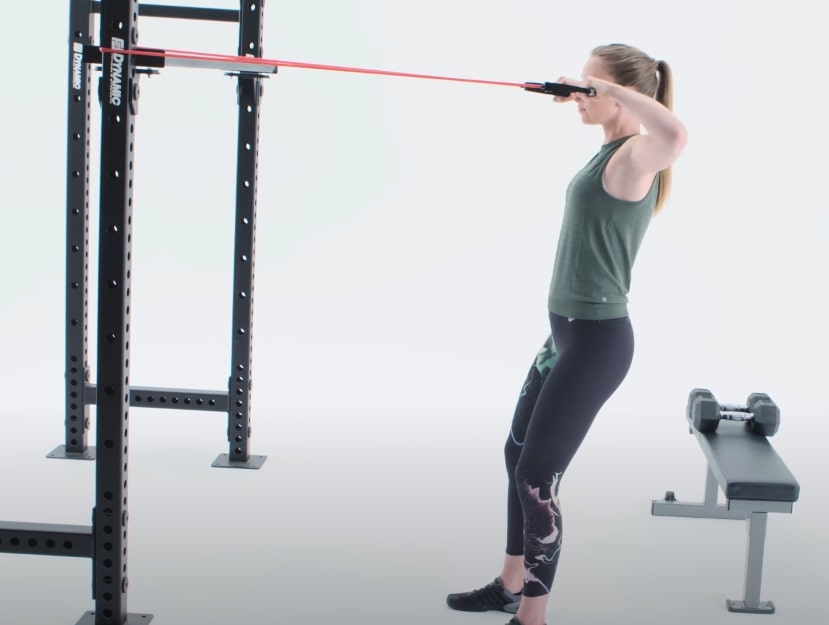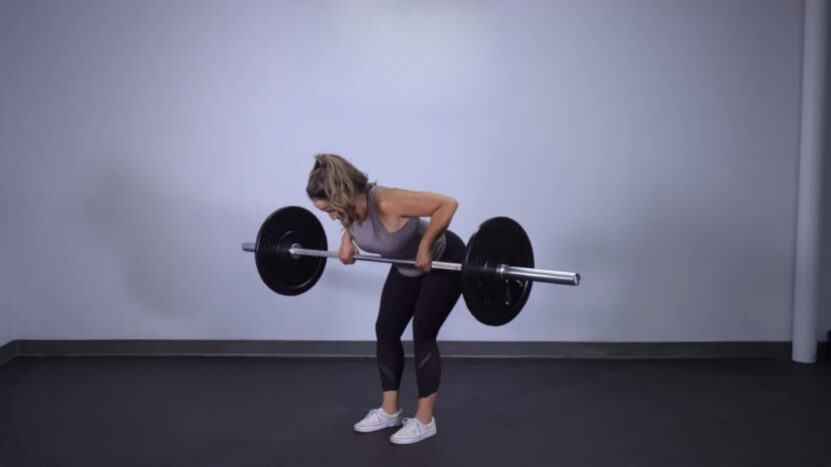The upright row is a popular exercise for building shoulder and upper back muscles, but it can come with risks. Many people experience shoulder pain or discomfort while doing it, and it’s not the best option for everyone.
If you’re looking for safer and more effective alternatives, you’re in the right place.
Let’s dig into the best alternatives that hit the same muscles without causing unnecessary strain.
Key Takeaways
- Avoid upright rows if they cause shoulder discomfort and choose safer alternatives like lateral raises, shrugs, and face pulls.
- Proper form is crucial to prevent injuries and maximize muscle growth in shoulder exercises.
- Strengthening your rotator cuff and incorporating safer movements will protect your shoulders long-term.
Why Replace the Upright Row?
Before we get into the alternatives, it’s important to know why you might want to replace the upright row. The movement puts your shoulder in a risky position called internal rotation, which can pinch the rotator cuff tendons. Over time, this can lead to shoulder impingement and injuries, especially if you’re lifting heavy.
Some people can do upright rows pain-free, but for many, it’s a ticking time bomb for shoulder issues. So, finding an exercise that avoids this risk while still working your delts, traps, and upper back is key.
Also, learn more about proper use of the Inversion Table.
Best Upright Row Alternatives
Here are some of the best exercises that target the same muscles without the risk of shoulder impingement.
1. Dumbbell Lateral Raise

This exercise isolates your lateral deltoids and is a great way to build shoulder width. Plus, it’s easy on the joints.
- Stand with feet shoulder-width apart, holding dumbbells by your sides.
- Raise the dumbbells to shoulder height, keeping a slight bend in your elbows.
- Slowly lower the weights back down.
Benefits
- Targets the lateral deltoids effectively
- Safer for the shoulders than upright rows
2. Cable Lateral Raise

A slight variation of the dumbbell lateral raise, using cables adds constant tension throughout the movement, giving your muscles an even better workout.
- Stand sideways to a cable machine, holding the handle in the hand furthest from the machine.
- Pull the cable straight up to shoulder height, then slowly return.
Benefits
- Constant tension from the cable
- Adjustable resistance for progressive overload
3. Barbell Shrug
Shrugs mainly target the trapezius muscles, which also get worked in upright rows. This movement focuses on building strong traps without messing with your shoulders.
- Stand with a barbell in front of you, feet shoulder-width apart.
- Lift your shoulders toward your ears as high as possible.
- Lower back down in a controlled manner.
Benefits
- Builds bigger traps without shoulder strain
- Easy to add more weight for progression
4. Face Pull

Face pulls are another great alternative that hits both your traps and rear delts. It’s a safe, shoulder-friendly exercise that should be part of everyone’s routine.
- Attach a rope to a cable machine at eye level.
- Grab the ends of the rope and pull toward your face, keeping your elbows high.
- Squeeze your shoulder blades together at the top, then slowly lower back.
Benefits
- Improves posture and upper back strength
- Strengthens rear delts and traps
5. Arnold Press
Named after the legend himself, the Arnold press is a dynamic shoulder exercise that works multiple parts of the deltoid.
- Start seated with dumbbells in front of your chest, palms facing you.
- Press the weights overhead while rotating your palms outward.
- Reverse the motion to return to the starting position.
Benefits
- Targets all heads of the deltoid
- Adds rotational movement for better muscle activation
6. Bent-Over Row

For a more comprehensive back workout, the bent-over row engages the traps, rhomboids, and rear delts along with the lats.
- Hinge forward at the hips with a barbell or dumbbells in hand.
- Pull the weight toward your lower chest, squeezing your shoulder blades together.
- Lower the weight slowly back to the starting position.
Benefits
- Builds both upper and mid-back muscles
- Great for overall back development
Why Some People Still Stick With Upright Rows?
Despite the potential risk, some lifters swear by the upright row. They believe that with proper form and lighter weights, the benefits outweigh the risks. Keeping the bar closer to the body and using a wider grip may help reduce the stress on the shoulder.
But if you’re looking to avoid the risk entirely, sticking to the alternatives is the safer bet.
The Importance of Form
Regardless of which exercise you choose, form is everything. Bad form is what causes most injuries in the gym, so make sure you’re performing each movement correctly.
Take your time to learn the right technique, and don’t be afraid to ask for help from a trainer if needed.
Comparison of Shoulder Exercises
| Exercise | Primary Muscles Worked | Secondary Muscles | Risk Level |
|---|---|---|---|
| Dumbbell Lateral Raise | Lateral Delts | Upper Traps | Low |
| Barbell Shrug | Upper Traps | None | Low |
| Face Pull | Rear Delts, Traps | Rotator Cuff | Low |
| Arnold Press | All Heads of Delts | Triceps | Moderate |
| Bent-Over Row | Rear Delts, Traps, Lats | Biceps | Moderate |
FAQs
How often should I train my shoulders to see results?
To see noticeable improvements in shoulder strength and size, aim to train your shoulders 1-2 times per week. Consistency is key, and combining compound movements with isolation exercises will give you the best results.
Can I replace the upright row with push-ups?
Push-ups primarily target the chest, triceps, and front deltoids, but they won’t fully replace the upright row or its alternatives for building shoulder width and upper back strength. Stick to shoulder-specific exercises like lateral raises and shrugs for more balanced development.
Are upright rows safe if I use light weights?
Using light weights can reduce the risk of injury, but the movement itself still places your shoulders in a vulnerable position. It’s better to choose safer alternatives, especially if you’ve experienced any shoulder discomfort in the past.
What’s the best way to warm up before shoulder exercises?
A proper warm-up includes dynamic stretches and light movements targeting the shoulders. Arm circles, band pull-aparts, and lightweight sets of face pulls or lateral raises will help get your muscles ready for heavier lifts.
Can I build big shoulders without heavy weights?
Yes, you can build big shoulders using lighter weights with higher reps, as long as you maintain good form and push close to failure. Exercises like lateral raises and Arnold presses are effective with both light and moderate weights.
What’s the best way to prevent shoulder injuries during workouts?
The best way to prevent shoulder injuries is to focus on proper form, avoid exercises that cause discomfort, and ensure your rotator cuff muscles are strong. Incorporating exercises like face pulls and external rotations can strengthen the muscles that stabilize your shoulders, reducing injury risk.
Last Words
At the end of the day, you have to listen to your body. If the upright row is causing discomfort, ditch it. There’s no reason to push through pain, especially when there are plenty of other exercises that can build the same muscles safely.
The options listed above provide great alternatives without the risks associated with the upright row. Experiment with these exercises, and find out what works best for your body.

